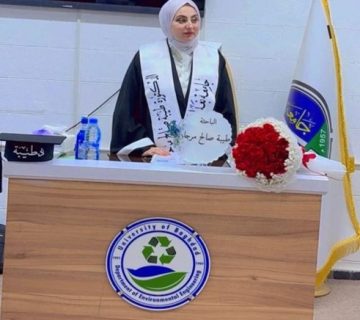It was conducted on Monday, 28/10/2024, in Dr. Ihsan Yahya hall the discussion of the PhD Dissertation of the student Mustafa Sabeeh Abood, which is tagged:
” Aerodynamic Characteristics Enhancement for a Car with Context of Single and Double Elements Inverted Wing-Type Spoilers”.
The discussion committee consisted of names listed below:
1- Prof. Dr. Karima E. Amori (Chairman)
2- Asst.Prof. Dr. Mohammed Idrees Mohsin (Member)
3- Asst. Prof. Dr. Ayser Muneer Flayh (Member)
4- Asst. Prof. Dr. Wisam Saadi Khudhair (Member)
5- Asst. Prof. Dr. Basim Abdulrazzak Rasheed (Member)
6- Asst. Prof. Dr. Anmar Hamid Ali (Supervisor)
This study investigates the critical role of aerodynamic design in minimizing drag and increasing downforce, focusing primarily on the impact of inverted wings. These wings manage airflow effectively to reduce drag and increase downforce, essential for high-speed stability. Focusing on the NISSAN Sunny, numerical simulations and experimental tests were conducted to analyze its aerodynamic performance under various driving conditions, including straight and curved paths.
Factors such as wing type, number of elements, best positioning, and ground effect were examined to determine high performance. The study also explored multi-element wing spoiler and diffuser designs with end plates and assessed how configuration, gap, and overlap distances between wing elements affected downforce and drag. The VAWT tower was globally decomposed into eight separate locations for analysis, and vibration data were measured applied to determine the optimal places of energy harvesting.
The Dissertation included recommendations including:
- Modifying the front wing-type spoiler allows fuel savings
- The rear wing-type diffuser minimized drag force, while the rear wing-type spoiler enhanced downforce, side force, yaw moment, and roll moment. Additionally, the front wing-type spoiler affected the pitch moment.
- A comparative analysis of experimental methods for lift and drag measurements revealed that the two-component balance provided the most accurate concurrent measurements with minimal deviations.
committee, the researcher received a rating of (Excellent).








